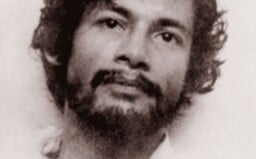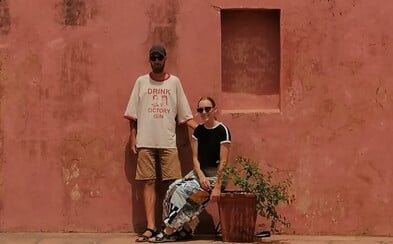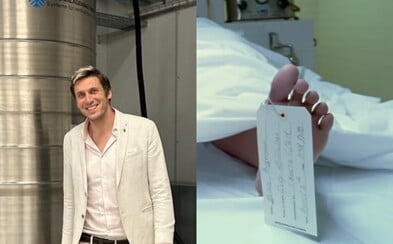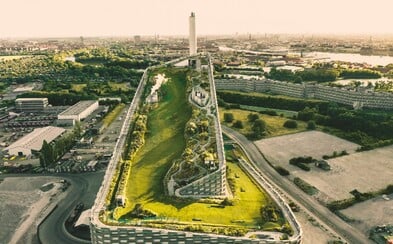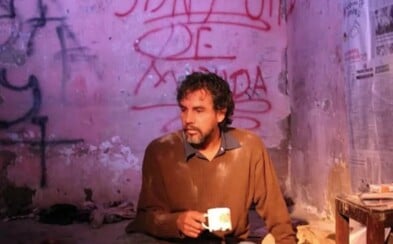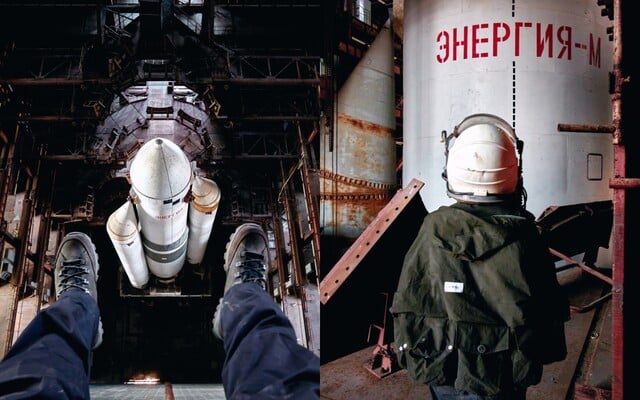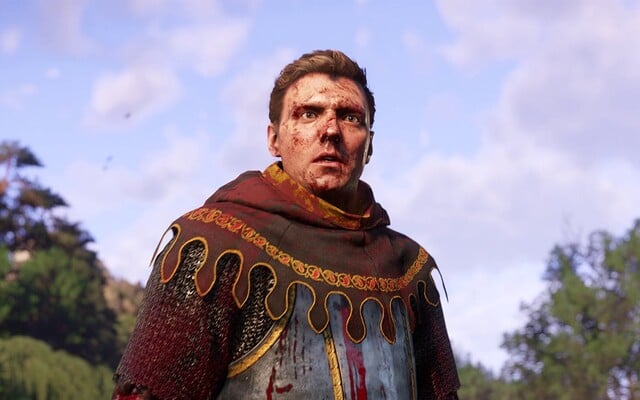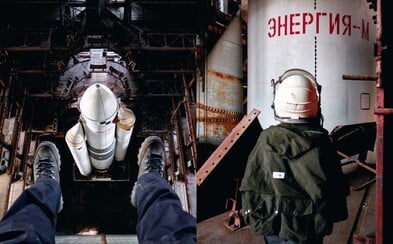 Filip visited the abandoned Soviet Baikonur Cosmodrome: The sight of the ruins of the most expensive space project is unreal
Filip visited the abandoned Soviet Baikonur Cosmodrome: The sight of the ruins of the most expensive space project is unreal
Filip visited the abandoned Soviet Baikonur Cosmodrome: The sight of the ruins of the most expensive space project is unreal
Filip visited the abandoned Soviet Baikonur Cosmodrome: The sight of the ruins of the most expensive space project is unreal
Report From an Underground Realm of the Dead. Thousands of Human Bones in an Ossuary Discovered by Accident.
When visiting the ossuary, you'll quickly realize that none of us will be here forever.
If problems persis, please contact administrator.

More than 50,000 skeletal remains were in this place back in the days. We couldn't believe it. In the underground, we saw countless human skulls all over the place, and the three-chamber crypt was literally overflowing with them. No wonder people had to walk directly on top of the remains of ossuaries in the past. Cholera and plague epidemics have killed so many people that there was simply nowhere to put them.
- Who was buried in ossuaries.
- What a staircase of human skulls look like?
- What is hidden in the oldest, third chamber.
- Why cemetery in the city used to be a problem.
- Why is one part of the ossuary sanctified.
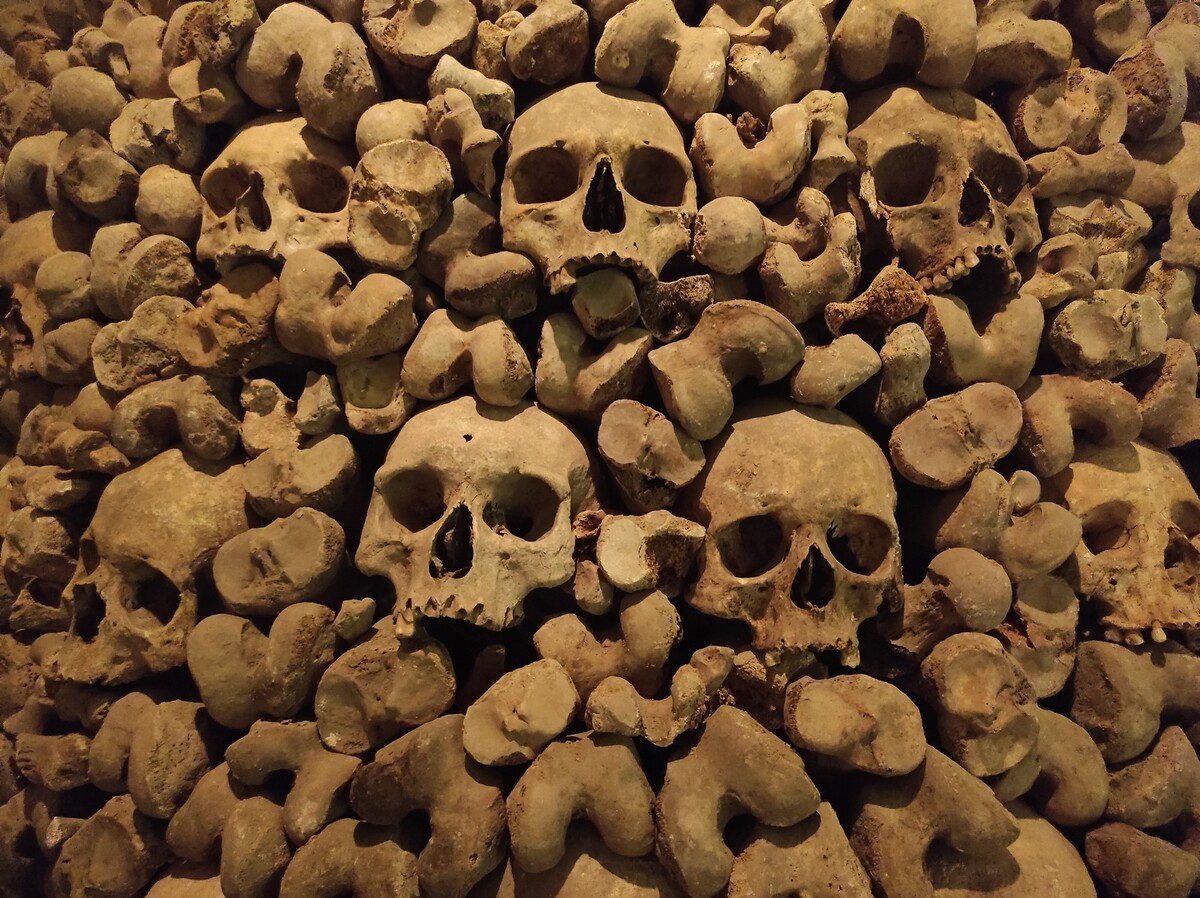
Once the body disintegrated, the remains were taken underground
It's impossible to overlook St. James' church in Brno. Being the most dominant feature of the city center, built in the early 13th century, it rises above its surroundings. Maybe you won't even notice that there is and entrance to the second largest underground ossuary in Europe on the right side of the church. The huge Parisian catacombs are number one.
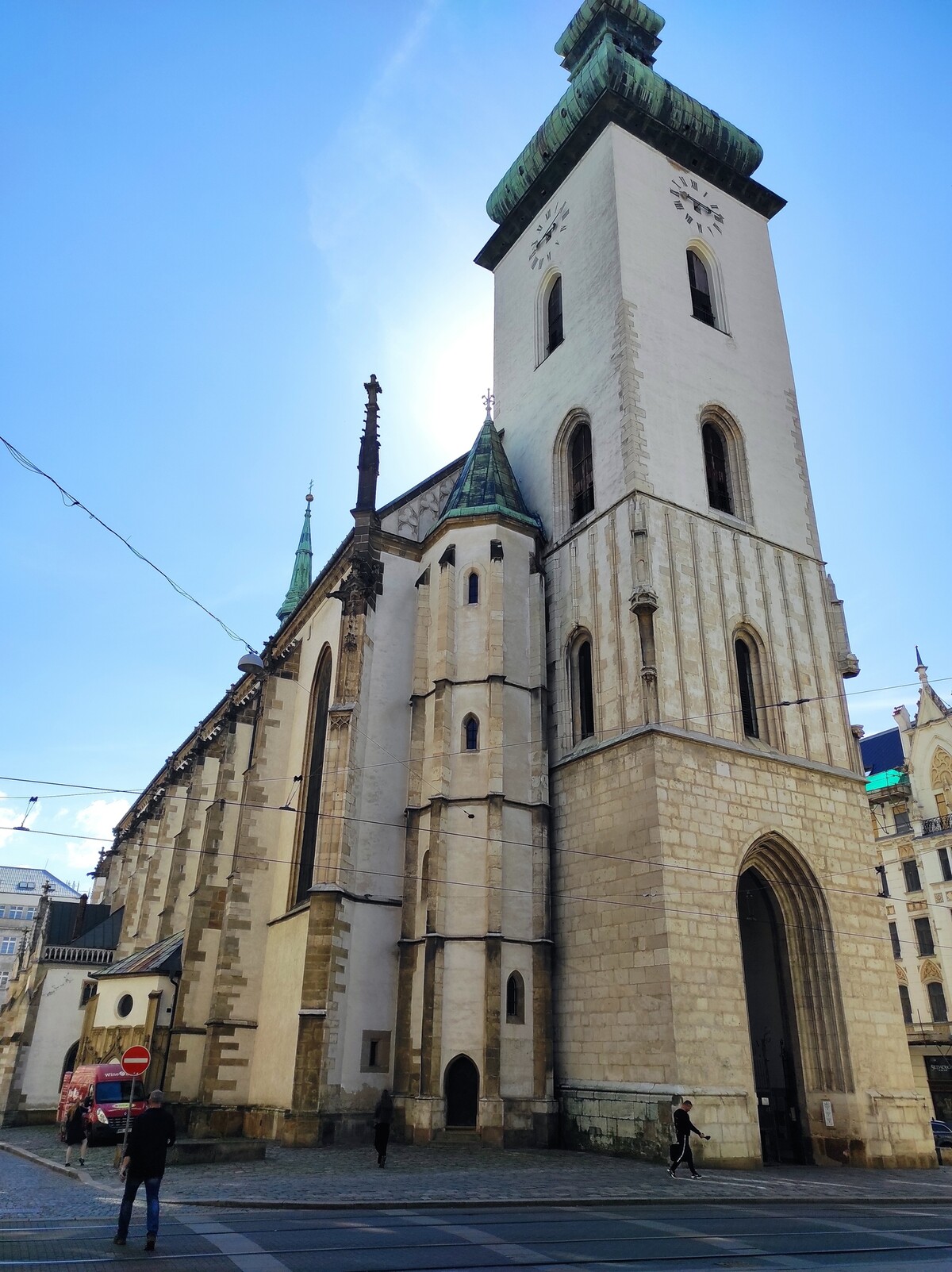
Although the weather forecast predicted relatively warm June weather for the whole week, we took our jackets just in case - and we were glad we did. As expected, the underground corridors of the ossuary were relatively cold. Before embarking on an underground inspection, under current measures we had to sign a release form stating that we had been tested negative or vaccinated.
The entrance hall of the ossuary is the most modern part of it and they were building it before 2012. We were mainly interested in the historic underground, which is the remains of the former cemetery. In the past, it surrounded the area on the surface around the St. James' church.
"Ossuaries were very common back in the days, because the cemetery itself did not function as a place of reverence, as it does today. In the past, people were meeting up on cemeteries regularly. With markets taking place there, and entertainers performing... They simply had a completely different purpose, " the guide Lucie Křížová told us.
Cemeteries are currently mostly located on the outskirts of cities, or in areas where there's room for expansion. Cemetery at the St. James' church was surrounded by palisades or family houses. It was therefore necessary to start burying people in the underground ossuary. They did this by first burying the body in a cemetery, and after about 10 to 12 years, when the bodies disintegrated, taking the remains underground.
Bones up to the ceiling
We arranged the tour on a Wednesday morning, so the ossuary was completely empty apart from the staff working there. Walking through the underground corridors surrounded by thousands of skeletal remains is a one-of-a-kind experience in itself. It is best enjoyed alone, or only in the presence of those who have been resting on the site for many centuries.

The underground consists of three parts. On the left side of the entrance (room number 4 on the floorplan above) is a spacious three-chamber vault, laying directly below the St. James' church. We've spent most of our time here.
Inside the column in the photo is a thick mesh into which the skeletal remains are embedded

At the end of the vault is the oldest part of the ossuary. "It's called the third chamber. It has been left in its original state in which it was discovered. This means that the storage of bones in this section corresponds to what it originally looked like here, " the guide told us.
Taller visitors can see the top of the raised skeletons in the third chamber, which have been isolated by a glass cover. The ossuary used to be filled with skeletons from the bottom to the top, and in some parts people therefore walked directly on top of the skeletons, Lucie specified.
Forget about visually impressive, column-shaped remains. This was simply a sea of bones in which one realizes very quickly that none of us will live forever.
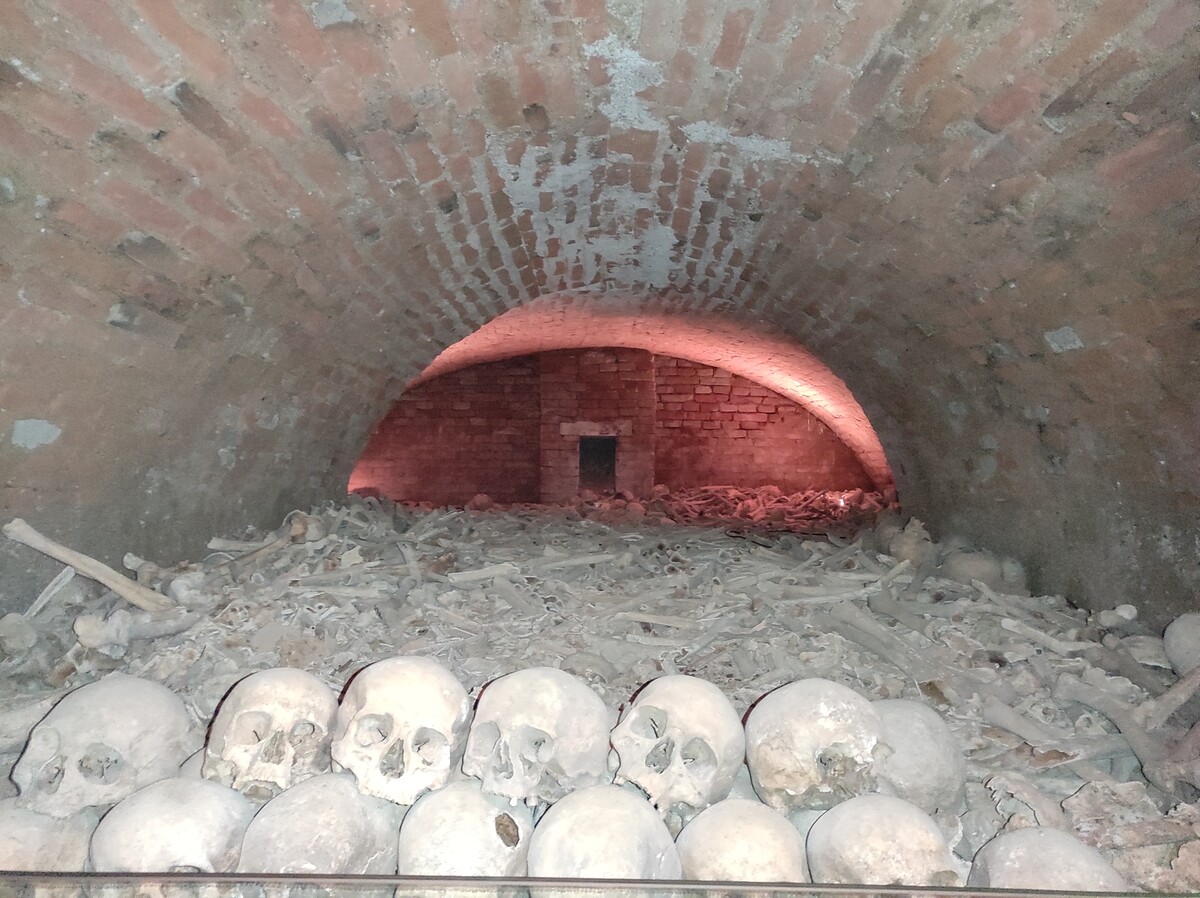
There is a large cross in the three-chamber vault on the left side. Lucie explained to us that this space was sanctified and was originally supposed to be a Christian chapel, where services could still be held today. Honestly, we cannot imagine how children or people of a more sensitive nature would take part in services at such a place. Positive energy certainly does not radiate here. Don't you think?
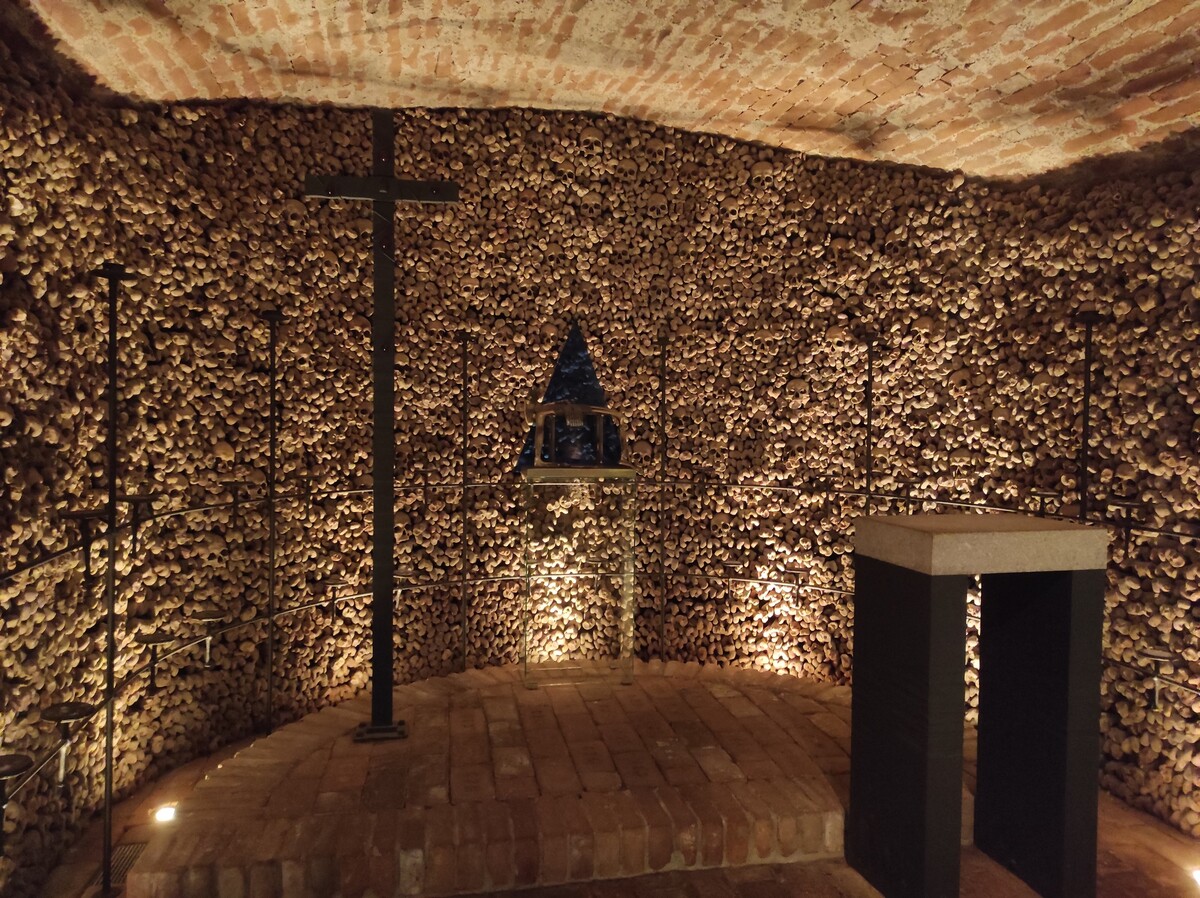
After a few minutes in the cold underground, listening to the background music, it reminded us of a soundtrack from an unknown horror movie. Lucie said that it was a composition called Sub Terra (Latin for underground) by the composer Miloš Štědroň, who composed it exclusively for the Brno ossuary after visiting it himself. You won't find this online.
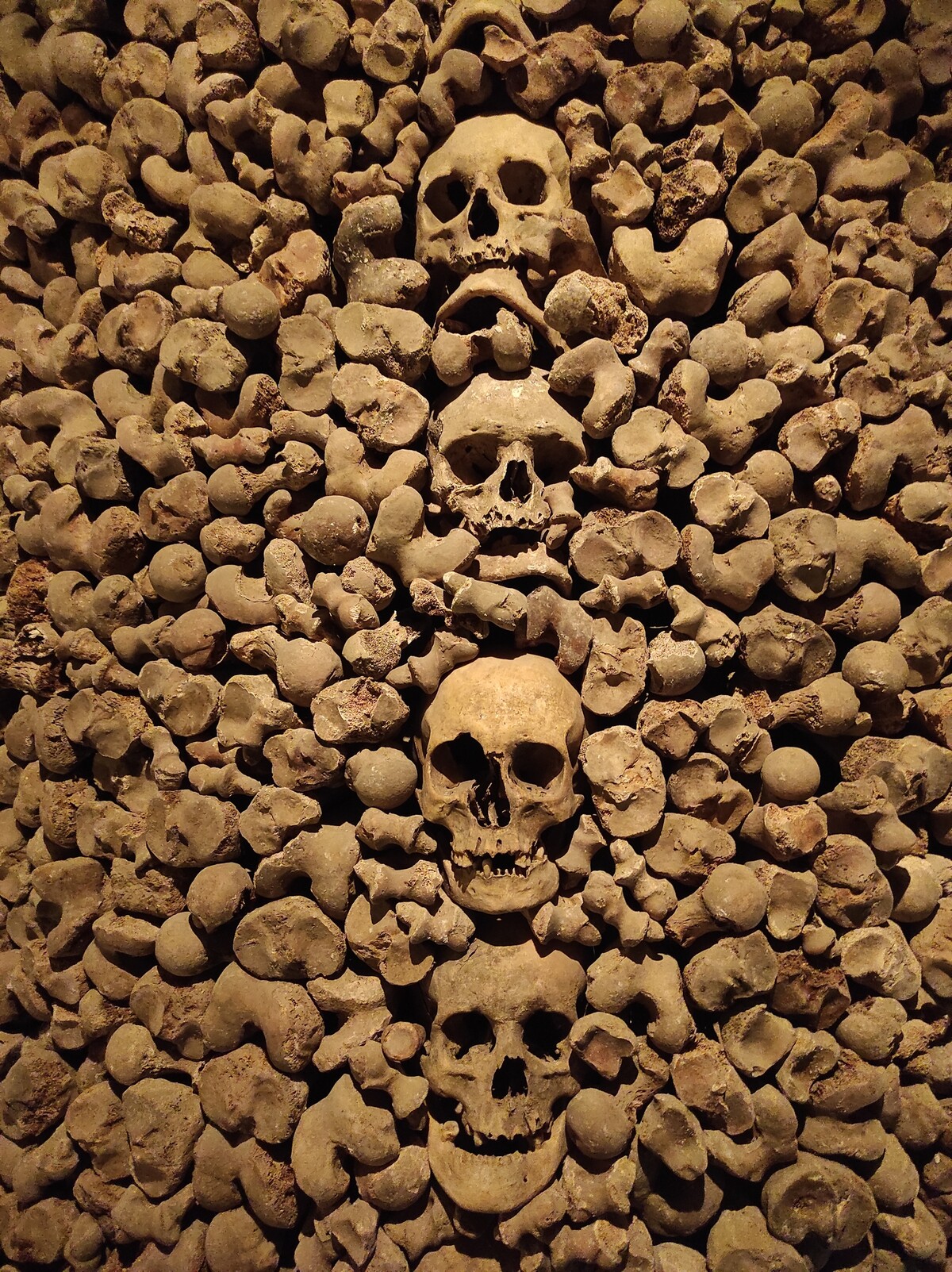
In the cemetery around the St. James' church and the ossuary in the first chapter of their existence, were buried people who were baptized here or had a funeral here. Among the remains we would find important local townsmen or priests. František Felix Žalovský, "the lord of Víceměřice, Hostice and Horní Moštěnice" had a tombstone in the underground. According to the inscription, he was said to be a noble knight who lived to be 63 years old.
Physically or mentally handicapped people, those who committed suicides, executioners, nonbelievers and others were buried elsewhere. This changed thanks to later decrees, which guaranteed that everyone would be buried in ossuaries. Given the church's attitude towards people who take away their own life, it is quite surprising that they even made space for them. However, they deliberately allocated the peripheral parts of the rooms for them.
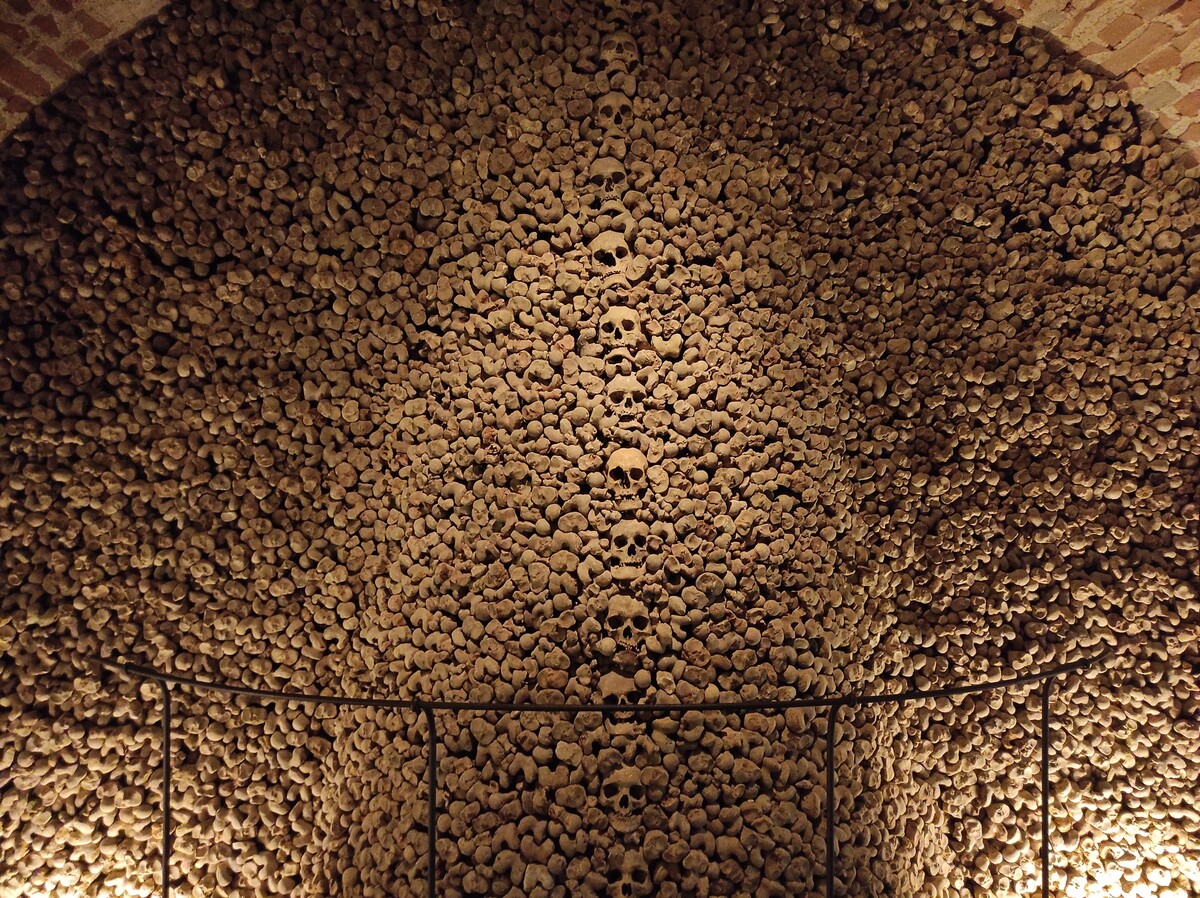
The most unique artifact among the remains can be found in the St. James' church, which houses the tomb of the legendary defender of Brno, Louis Raduit de Souches, a duke from the Thirty Years' War, who defended the city from Swedish troops.
In the largest and oldest room of the ossuary there is also a pair of metal boxes for skeletal remains, which have been preserved and restored. It is believed that the remains of important personalities of the city were stored in them.
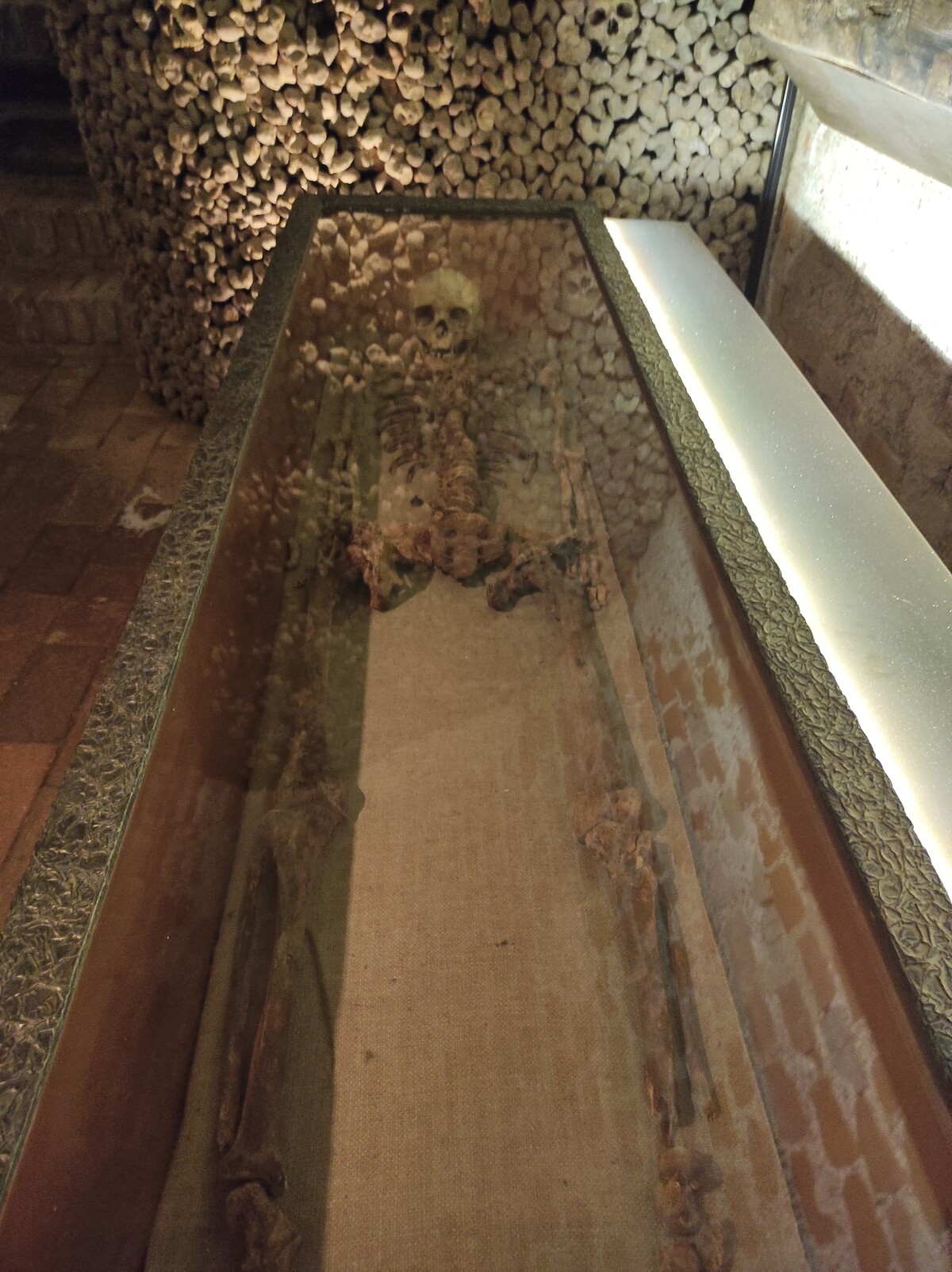
In the right part of the room, we've noticed a colored stained glass window, with once the original entrance to the ossuary behind it. In the past, it was entered through St. James' church, where they also carried skeletal remains from. The colors of the stained glass are emphasized by a small lamp placed directly behind the glass. Unfortunately, this entrance is closed up, so we didn't manage to enter the church this way.
The ossuary and cemetery were closed in the 18th century, when Emperor Joseph II. issued the so-called Josephine Reforms. Among other things, they banned the burial of people in the city for hygienic reasons. Graves around St. James' church were often very shallow, and when a real storm came, the water washed the bodies out of the graves.
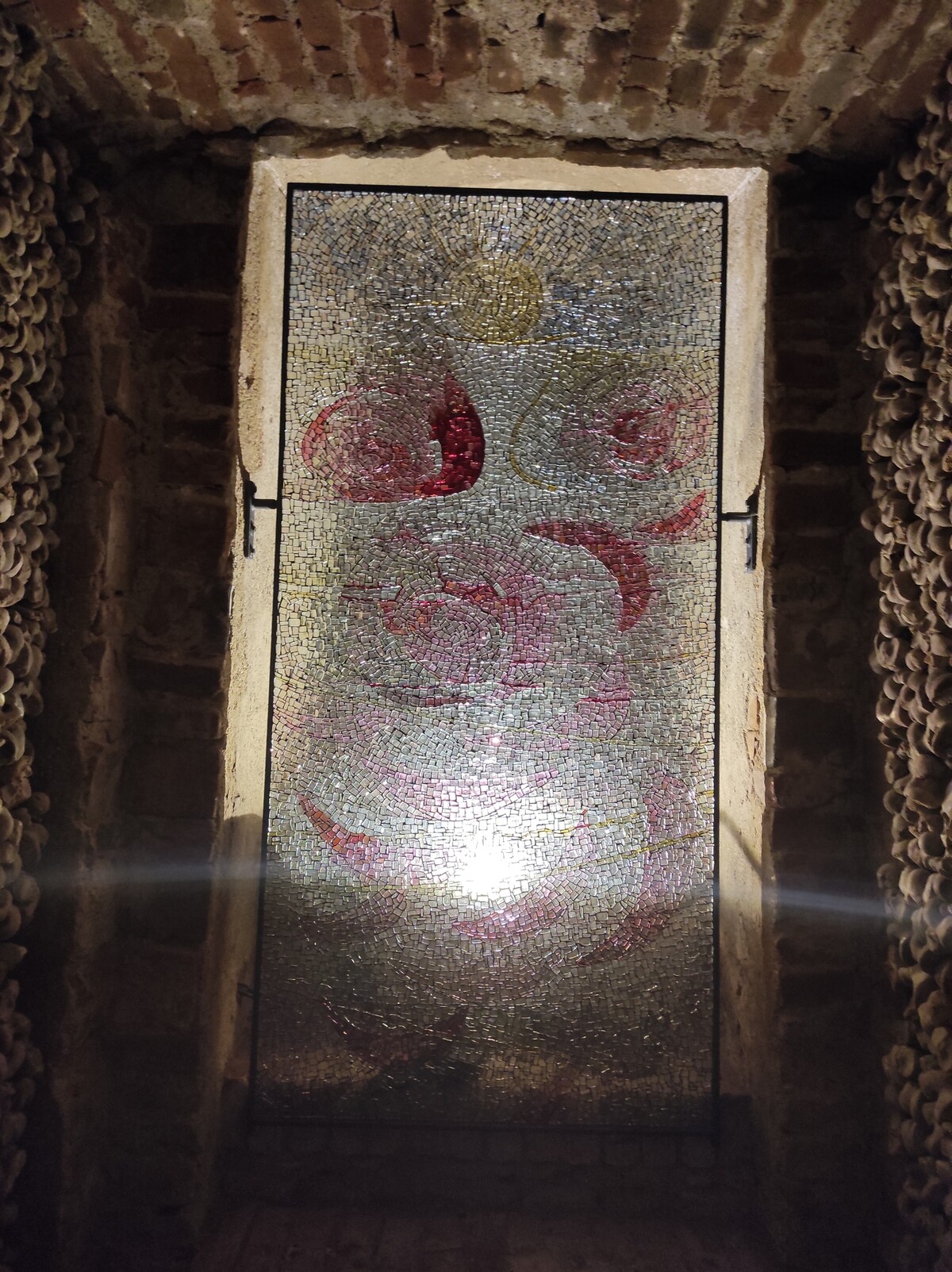
"It was disrespectful and unhygienic. Another thing is that one of the local reservoirs led through the cemetery. Thus, impurities from decomposed bodies soaked into the water, as a result of which an epidemic of cholera also arose, " said our guide Lucie. So the cemeteries were relocated behind the city and the ossuary was closed. Europe is said to be still full of ossuaries that no one has yet discovered.
The existence of the ossuary under St. James' church was practically forgotten between 1784 and the beginning of the 21st century. When the Brno ossuary was discovered in 2001, more than 50,000 skeletal remains were found in it. Human bones reached the ceiling of the vault and they were laid out in layers so they'd fit as many as possible.
In order to keep the skeletal remains in a well-preserved condition, technicians come to the ossuary once a year or two to clean and bleach them. At the moment, they have left about 10 percent of the total number in the ossuary. The rest was buried in a mass grave at the Central Cemetery in Brno.
Discovering the ossuary wasn't by any means easy. The archives of the local church are not complete, because there's been several robberies throughout the history and burned by the Nazis during World War II. The ossuary in Brno was found by the archaeologists more or less by accident during the reconstruction of the tile floors.
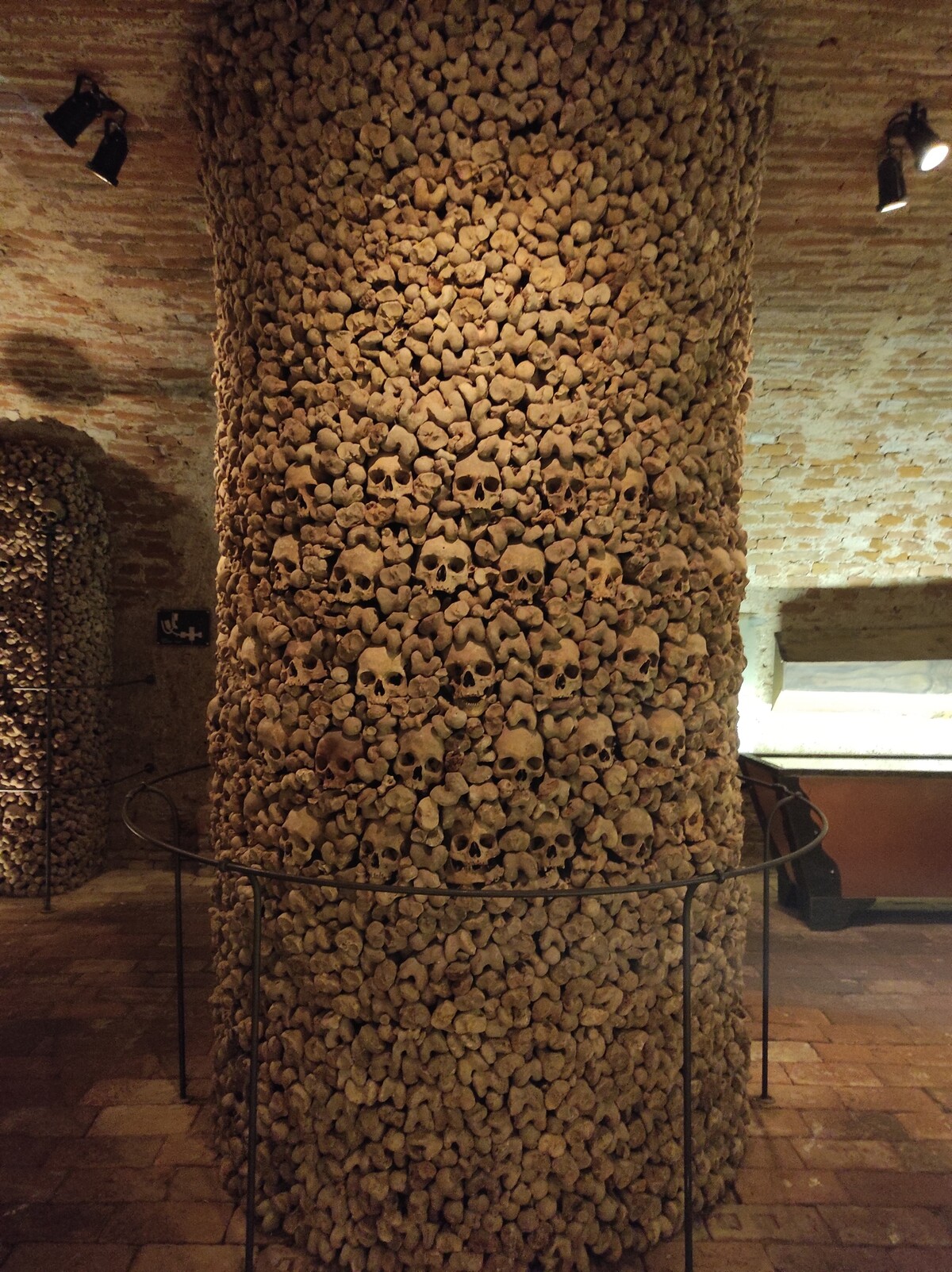
Skull-shaped staircase
From the three-chamber vault, we went to the opposite side to the exhibition located below the square. On the left we were fascinated by the oval iron door with skeleton images. According to Lucie, in 2001 they served as an entrance through which camera probes were inserted.
By using those, they were able to find out what was hidden underground. At a depth of four meters, the probe confirmed that there was indeed an ossuary underground. Currently, it is only a room with technology, where, a speaker is located amongst other things. So no need to look for any mysterious remains.
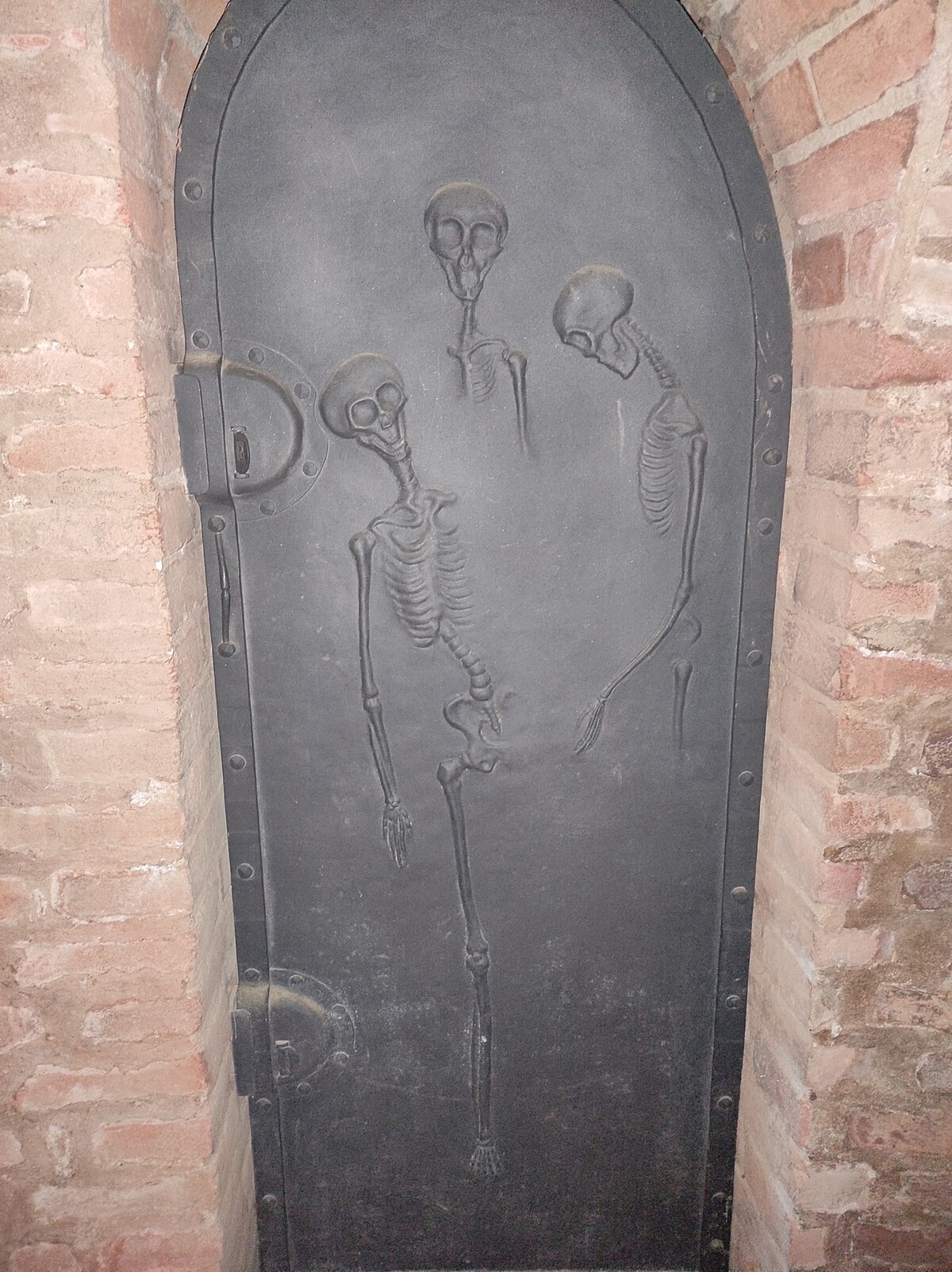
The corridor through which we walked to the other side was created in 1741 due to the high mortality of the population, which then increased to about 16 victims a day. A huge number at the time. The underground was then filled mainly as a result of plague and cholera epidemics.
The inflow of the dead wasn't stopping and the built corridor ceased to suffice. It was completely filled within six years, so the city management decided to continue expanding. At the end of one of the corridors below the square, you'll find a sculpture called Eternal Light by an artist that goes by the name Gary.
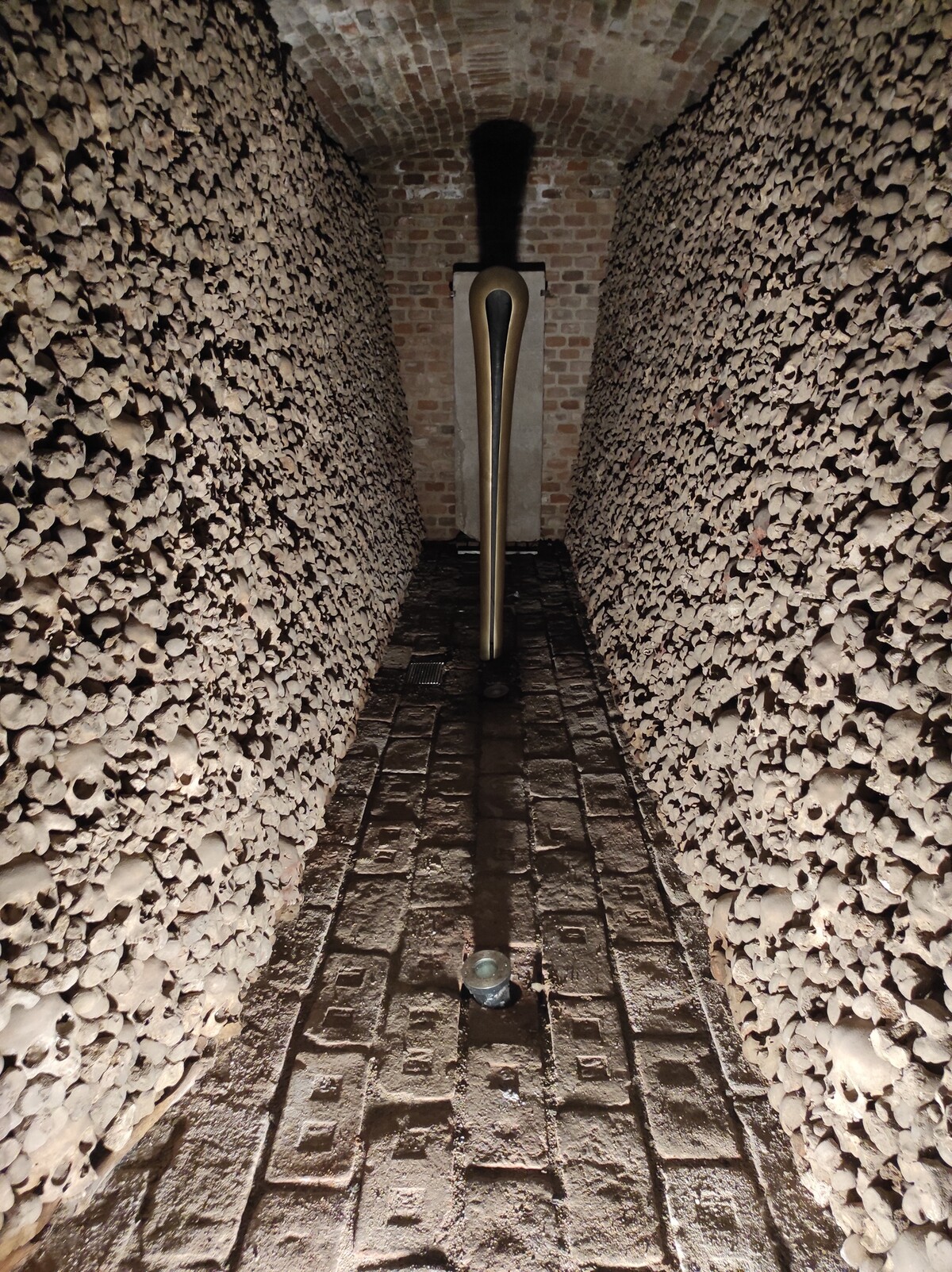
In the second corridor, skulls in the shape of a staircase are displayed. According to Lucie, this corridor was supposed to lead even further across the square. Nobody really knows why it didn't happen in the end.
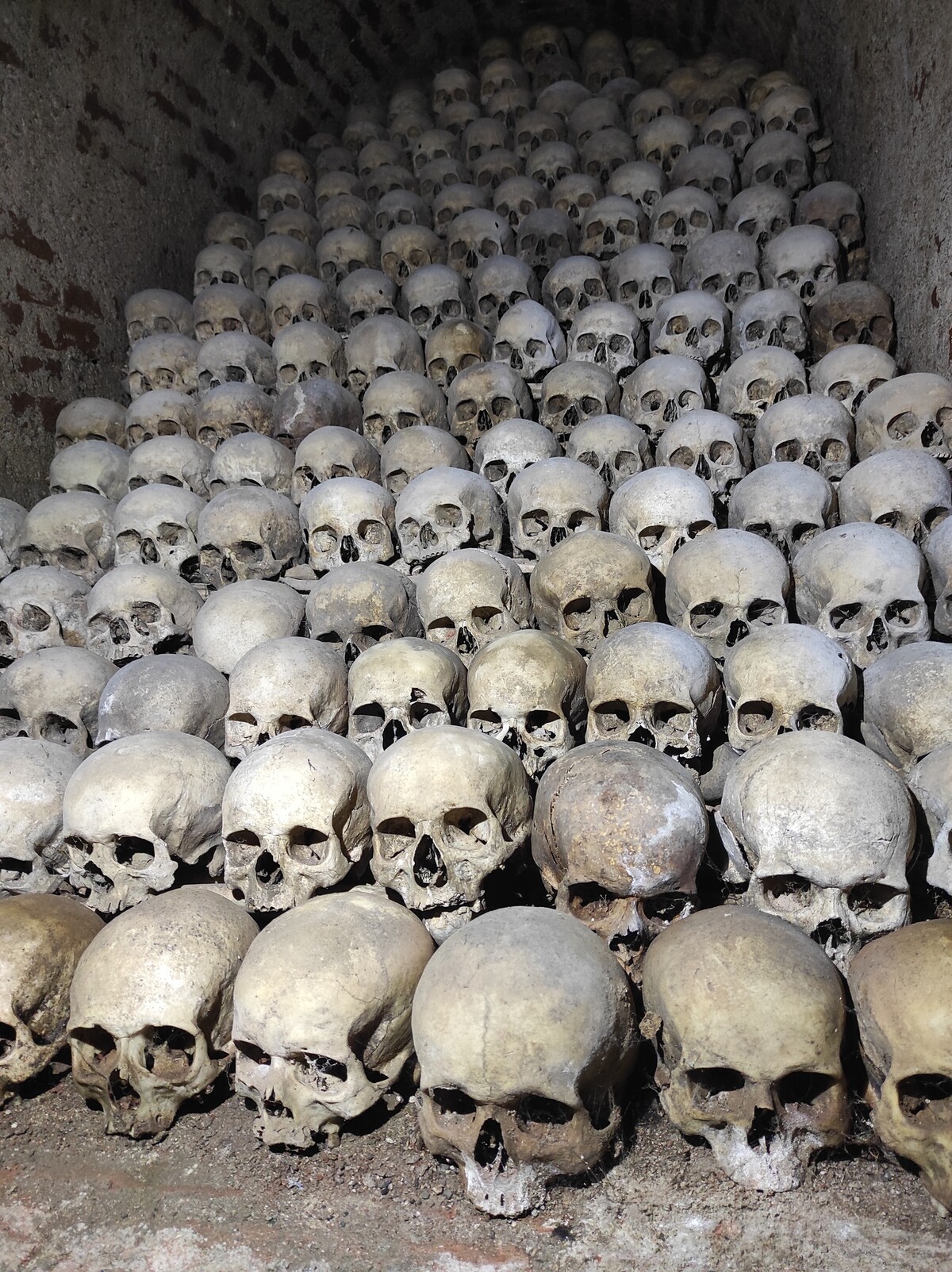
If problems persis, please contact administrator.



